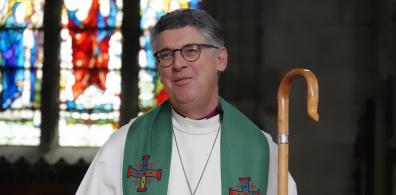As we begin a new year, our fantastic treasurers will be busy preparing the annual accounts for our churches. As with all charities, including PCCs, these are required by law, however, using your accounts well can be of real benefit to your church and give the PCC confidence in the decisions they are making.
Communication
To a lot of people accounts are mystifying, so we have to think carefully about how we want to communicate them. We should always have the full accounts available, but most people will only want to have a synopsis of the important information. These figures tell a story of the faithfulness of our congregations and friends, so think about the accounts in the same way you would think about a sermon in your church – what is the key message and what are the two or three bullet points that help support that message? For example, the key message may be that the church is doing well this year and made a surplus and this is supported by increased giving from the congregation, a legacy given by a beloved congregation member, and the finance committee spending time searching for a better gas and electricity deal.
Reserves Policies
All PCCs should have a reserves policy, stating the amount of unrestricted money the PCC aims to keep. Most reserves policies only include a lower limit (say at least 3 months’ unrestricted expenditure), but it is really helpful to also include an upper limit (say 6 months’ unrestricted expenditure). Then if you have more than you need to keep in reserve, the spare amount can be used by the church for whatever purpose the PCC considers best. Hopefully this will release some money and energy for you to start that project you have always said “one day…”. Where actual reserves differ significantly to the target levels a brief note should be included in your accounts to show what is being done with an excess or about a shortfall.
Cash Flow
It is important to keep in your current account the amount you need for the day-to-day running of the church and a little extra for emergencies. However, churches can store more than this in their current account. Your accounts can help show how much you need at any point and so give you a rough guide to how much you need to keep there. Then you can think about putting any extra money into a deposit account or investing it if you think you will want it in the longer term, and so earn the church a higher rate of interest or dividends.
Unused Funds
Many of our PCCs put money aside in designated funds or are given money that needs to be placed within restricted or endowed funds, and it is often easiest to see these when you have your accounts. However, over the years the purposes of these funds can be partly forgotten and the money is left unused. Do look at your funds and think about what you can do with them, if the original purpose is no longer relevant is there something else you can do with the money, is the endowment small enough that it could be wound up? Often this may mean you need to go back to any original documents, but please do get in touch with us at the WDBF as we can offer advice on the different ways you may be able to use these funds.
Thinking about the Future
Accounts by their nature look at the past, but we need to communicate where they will lead us. Try to think about how to link where you are financially with the plans for the church for the coming years. Each church is in a different place financially and so your priorities for the future will be different, it may be you are looking at keeping steady, rebuilding reserves after Covid and keeping the building in good repair, and while this could feel gloomy it also tells a story of the ministry being one of faithfulness to the congregation who are still there and their growth as disciples of Christ.
The diocesan finance team are always happy to talk to you about how you can best present your accounts and advise on anything linked to parish finance. Do contact us for a chat.

